Now We All Know What Happens If You Get The Book Of Peace. You Return It To Syracuse And Save Proteus.
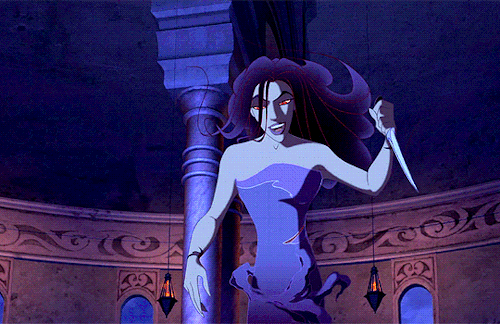
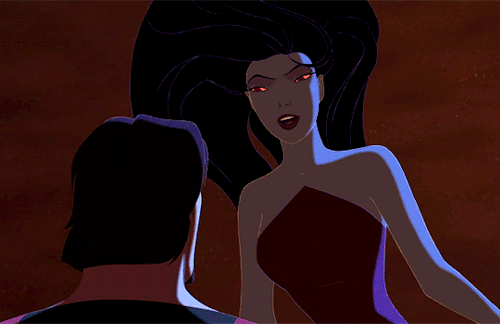
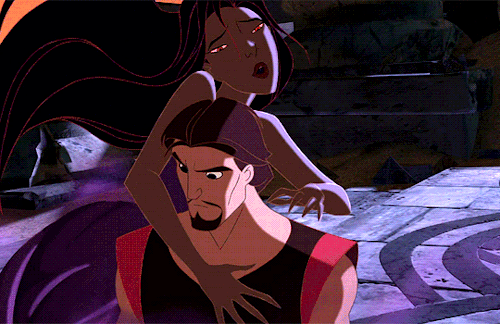


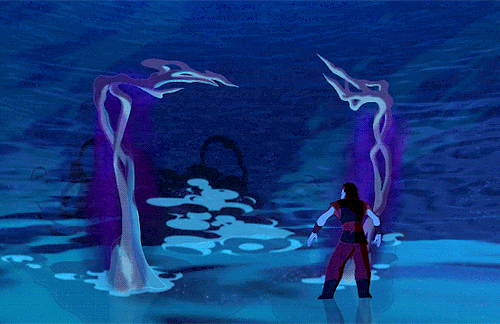
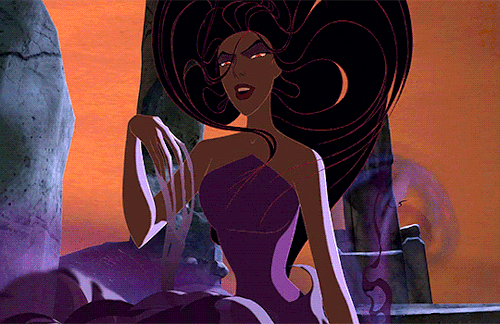
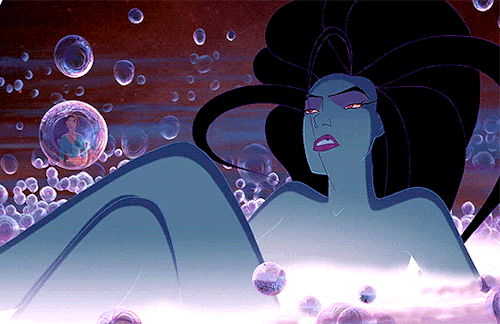


Now we all know what happens if you get the Book of Peace. You return it to Syracuse and save Proteus. But if you don’t get the Book, you have a choice to make. Either sail to paradise with the woman of your dreams, or return to Syracuse to die. You’re either a thief or a hero. So here’s my question: If you don’t get the Book, will you go back to die?
SINBAD: LEGEND OF THE SEVEN SEAS (2003)
More Posts from Lauremaster and Others
Have I mentioned my love for the warlock class? I love the way its set up mechanic wise, the flavor potential, and the spellcasting is evocative as heck!
Want to have a pact with a cosmic being that allows you to summon shooting stars when you cast eldritch blast?
Want to be the only mortal that can comprehend the madness of the great old ones?
Want to have an archfey that abducted you as a child to be the friend of their own child?
Want to have your soul sold to the lord of the hunt before your birth and have to pay the price for it by serving them?
Want to make a pact with a storm elemental that like a symbiote lives in your body disguised as your natural bioelectricity?
Want an ancient dragon to keeps you as part of its hoard and in exchange grants you a long life and its protection?
Want some sword you picked up whisper into your mind that you need to fight against those who oppress you?
Want the spirits of your ancestors to grant you great power to protect the current member of the bloodline?
Want Asamodeus to favor you because you remind them of a mortal they once loved many eons ago?
Want to be the only survivor of a shipwreck and then have the dead souls of your crewmates grant you access to the arcane and in exchange you take care of their unfinished business on the mortal plane?
Warlock! Warlock! Warlock!



The Chain of Acheron, Helltrooper Bark
Tiefling
Glamour Bard
Traveler, Author, Mercenary. Prior to joining the chain, Bark hitchhiked and drifted the timescape, writing and spreading tales of “his” exploits. He’s fond of his guitar for spinning his tales but will use the harmonica to cast a quick spell.
He decided to join the chain after what happened in alloy, seeing opportunity for adventure. After encountering Ajax with the rest of the chain, Bark feels closer to his company than anyone from his previous lives. Given the name Bark for his surprising lack of skill in combat. Despite being a less than average fighter, Bark keeps morale up among chain members and has made many friends.


a travelling salesperson making their final rounds on the last day of autumn
Concept: a D&D-style fantasy setting where humanity’s weird thing is that we’re the only sapient species that reproduces organically.
Dwarves carve each other out of rock. In theory this can be managed alone, but in practice, few dwarves have mastered all of the necessary skills. Most commonly, it’s a collaborative effort by three to eight individuals. The new dwarf’s body is covered with runes that are in part a recounting of the crafters’ respective lineages, and in part an elaboration of the rights and duties of a member of dwarven society; each dwarf is thus a living legal argument establishing their own existence.
Elves aren’t made, but educated. An elf who wishes to produce offspring selects an ordinary animal and begins teaching it, starting with house-breaking, and progressing through years of increasingly sophisticated lessons. By gradual degrees the animal in question develops reasoning, speech, tool use, and finally the ability to assume a humanoid form at will. Most elves are derived from terrestrial mammals, but there’s at least one community that favours octopuses and squid as its root stock.
Goblins were created by alchemy as servants for an evil wizard, but immediately stole their own formula and rebelled. New goblins are brewed in big brass cauldrons full of exotic reagents; each village keeps a single cauldron in a central location, and emerging goblings are raised by the whole community, with no concept of parentage or lineage. Sometimes they like to add stuff to the goblin soup just to see what happens – there are a lot of weird goblins.
Halflings reproduce via tall tales. Making up fanciful stories about the adventures of fictitious cousins is halfling culture’s main amusement; if a given individual’s story is passed around and elaborated upon by enough people, a halfling answering to that individual’s description just shows up one day. They won’t necessarily possess any truly outlandish abilities that have been attributed to them – mostly you get the sort of person of whom the stories could be plausible exaggerations.
To address the obvious question, yes, this means that dwarves have no cultural notion of childhood, at least not one that humans would recognise as such. Elves and goblins do, though it’s kind of a weird childhood in the case of elves, while with halflings it’s a toss-up; mostly they instantiate as the equivalent of a human 12–14-year-old, and are promptly adopted by a loose affiliation of self-appointed aunts and uncles, though there are outliers in either direction.
if i saw a ring of mushrooms in the forest i would step inside it actually
Supervillains announcing their plans is actually a union thing so they can’t be sued for damages someone else may commit at the same time
How to tell if you’re Bi:
You have an atomic number of 83
You’re pentavalent
You crystallize into repeating cube shapes
When your surface is exposed to oxygen it oxidizes into a rainbow
You are mildly radioactive with a half life longer than the age of the universe
the Spartan desire to be simultaneously proud of your identity while also wanting the luxury of being invisible in public space, not because you are ashamed but because you are othered, is analogous to the struggle for queer visibility. in this essay I will
I don’t think anime vs western animation are as different as people claim due to the fact they have inspired and fed off each other for decades (they’re friends!!), however I do think our environmental messages to kids are… significantly and interestingly different
whereas, say Ghibli films express a deep Shinto-based respect and reverence for nature:

fighting for it as a means of both self-preservation and expression of heroism revolving around justice

and a matter of other groups of humans (the government often) going up against the stalwart youth

This is contrasted to western animation which tends to be like…. hey! look at this funny bat! And pollution is an evil spirit you can fight like physically


that isn’t to say the west doesn’t depict environmentalism as heroic and even involving collective action, Captain Planet is a good example of this

but individualism is still very present, the struggle is stalwart youths versus an individual or individual corporation, hell, sometimes you even get a sympathetic backstory for the corporation and weirdly cool rock song

to be clear, antagonists like Lady Eboshi in Princess Mononoke are sympathetic too, but it is… different, Lady Eboshi is trying to survive due to circumstances but it is all of Irontown that represents a system of corruption
In comparison, there is this western idea of corruption coming from individuals rather than systems as well as the fact they aren’t trying to save nature because we are part of it, but because nature itself is a person and thus worthy of respect
In Fern Gully the fairy’s represent nature, the Lorax represents nature, Captain Planet is literally just nature, all things we can talk to and relate to, where in Princess Mononoke and Nausicaa the ultimate nature spirits are something you can’t talk to and are frankly terrifying, awe-inspiring, and mighty


Western epistemology is heavily rooted in Christianity which says that man has dominion over fish of the sea, fowl of the air, and creatures of the land, ect, which leads to a utilitarian and separate view of nature– what can it do for us as separate (higher) beings, and the only way to combat this view is to say “actually nature is a person and thus worthy of protection”
Whereas Japanese Shintoism has much more emphasis on the idea that we are all part of a whole with nature, nature is the ultimate divine with nothing more important than the other, and something worthy of protection not because we can understand it, but because we can’t



“It’s a mistake to think about nature from the idea of efficiency, that forests should be preserved because they are essential to human beings”– Hayao Miyazaki
this is not to completely bash western animation, it does have other strengths such as emphasizing children’s relationship to empathy, empathy toward others in “Toy Story” and empathy toward themselves in “Inside Out”
However, our methods of conveying environmentalism could use some updating and steering away from “goofy” and “relatable” and maybe a little more terror and awe involved with fighting the good fight
-
 unfucked reblogged this · 1 month ago
unfucked reblogged this · 1 month ago -
 awesome-normal-heroes reblogged this · 1 month ago
awesome-normal-heroes reblogged this · 1 month ago -
 crazy-crystals-101 liked this · 1 month ago
crazy-crystals-101 liked this · 1 month ago -
 archeryqueen95 reblogged this · 1 month ago
archeryqueen95 reblogged this · 1 month ago -
 my-childhood-i-guess reblogged this · 1 month ago
my-childhood-i-guess reblogged this · 1 month ago -
 jfictitional liked this · 1 month ago
jfictitional liked this · 1 month ago -
 soulreader05 liked this · 1 month ago
soulreader05 liked this · 1 month ago -
 latiasdream liked this · 1 month ago
latiasdream liked this · 1 month ago -
 iolaussharpe-24 reblogged this · 1 month ago
iolaussharpe-24 reblogged this · 1 month ago -
 iolaussharpe-24 liked this · 1 month ago
iolaussharpe-24 liked this · 1 month ago -
 winterroost reblogged this · 1 month ago
winterroost reblogged this · 1 month ago -
 chilewithcarnage liked this · 1 month ago
chilewithcarnage liked this · 1 month ago -
 bocchanworld liked this · 1 month ago
bocchanworld liked this · 1 month ago -
 maerimary liked this · 1 month ago
maerimary liked this · 1 month ago -
 allarounddivinity reblogged this · 1 month ago
allarounddivinity reblogged this · 1 month ago -
 miaowmelodie reblogged this · 2 months ago
miaowmelodie reblogged this · 2 months ago -
 hangry-eyes liked this · 2 months ago
hangry-eyes liked this · 2 months ago -
 itsgrimskull liked this · 2 months ago
itsgrimskull liked this · 2 months ago -
 kawiza reblogged this · 2 months ago
kawiza reblogged this · 2 months ago -
 strangesoulrebel liked this · 2 months ago
strangesoulrebel liked this · 2 months ago -
 insomnivamp liked this · 2 months ago
insomnivamp liked this · 2 months ago -
 archeryqueen95 liked this · 2 months ago
archeryqueen95 liked this · 2 months ago -
 yuriromanovich liked this · 2 months ago
yuriromanovich liked this · 2 months ago -
 silvadour liked this · 2 months ago
silvadour liked this · 2 months ago -
 ha-im-gonna-die-alone reblogged this · 2 months ago
ha-im-gonna-die-alone reblogged this · 2 months ago -
 animitator liked this · 2 months ago
animitator liked this · 2 months ago -
 qaz1234etu liked this · 2 months ago
qaz1234etu liked this · 2 months ago -
 nonbinary-weirdo reblogged this · 2 months ago
nonbinary-weirdo reblogged this · 2 months ago -
 salmabunny liked this · 2 months ago
salmabunny liked this · 2 months ago -
 astramoirai reblogged this · 2 months ago
astramoirai reblogged this · 2 months ago -
 shineyourlightsims reblogged this · 2 months ago
shineyourlightsims reblogged this · 2 months ago -
 ladyteldra liked this · 2 months ago
ladyteldra liked this · 2 months ago -
 shaywillowtree liked this · 2 months ago
shaywillowtree liked this · 2 months ago -
 autieofthevalley reblogged this · 2 months ago
autieofthevalley reblogged this · 2 months ago -
 angel1interrupted liked this · 3 months ago
angel1interrupted liked this · 3 months ago -
 starzi liked this · 3 months ago
starzi liked this · 3 months ago -
 sendnoodls reblogged this · 3 months ago
sendnoodls reblogged this · 3 months ago -
 jasighn liked this · 3 months ago
jasighn liked this · 3 months ago -
 optimisticcomicplanet liked this · 3 months ago
optimisticcomicplanet liked this · 3 months ago -
 alanorto liked this · 3 months ago
alanorto liked this · 3 months ago -
 footofananimal reblogged this · 3 months ago
footofananimal reblogged this · 3 months ago -
 sheepheadfred liked this · 3 months ago
sheepheadfred liked this · 3 months ago -
 fieryaxolotl reblogged this · 3 months ago
fieryaxolotl reblogged this · 3 months ago -
 pierreharveylottway liked this · 3 months ago
pierreharveylottway liked this · 3 months ago -
 1800naveen reblogged this · 3 months ago
1800naveen reblogged this · 3 months ago -
 spideyladman liked this · 3 months ago
spideyladman liked this · 3 months ago -
 valesafe reblogged this · 3 months ago
valesafe reblogged this · 3 months ago -
 al3ssio97 liked this · 3 months ago
al3ssio97 liked this · 3 months ago -
 rakubalka liked this · 3 months ago
rakubalka liked this · 3 months ago